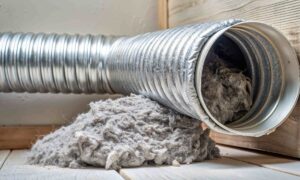A swimming pool is often a cherished feature of a home, providing recreation, relaxation, and a place for families and friends to gather. However, a pool also has significant responsibilities, particularly regarding safety and maintenance. Regular inspections are critical to ensuring the safety of all who use the pool and protecting the property from costly repairs or accidents. Neglecting inspections can lead to hidden risks that endanger lives and increase financial liabilities. We will discover why regular pool inspections are crucial for maintaining a safe and enjoyable home environment.
Ensuring Structural Integrity and Preventing Hazards
A key reason for regular pool inspections is to ensure the structural integrity of the pool and its surrounding areas. Over time, pools can develop cracks, leaks, or other damage due to wear and tear, ground shifts, or exposure to harsh weather. These structural issues can compromise swimmers’ safety and lead to injuries or accidents. For instance, broken tiles or sharp edges can cause cuts, while leaks can weaken the pool’s foundation, posing a collapse risk.
Beyond the pool, the surrounding deck and fencing also require careful attention. Loose or damaged pool decking can become a tripping hazard, and improperly secured fences can fail to keep unsupervised children or pets out of the pool area. Regular inspections help promptly identify and address these issues, ensuring the pool area remains safe.
Structural problems left unchecked can also escalate into costly repairs. For example, a small leak can lead to significant water loss, increased utility bills, and damage to the pool’s equipment or landscaping. Regular inspections help maintain the pool’s safety and save homeowners from expensive and preventable repairs.
Ensuring Proper Functioning of Equipment
A safe pool experience depends heavily on properly functioning its equipment, such as pumps, filters, heaters, and lighting systems. Malfunctioning equipment can pose various risks, from reduced water quality to electrical hazards. For instance, a poorly functioning pump or filter can lead to inadequate water circulation, allowing harmful bacteria or algae to thrive. Similarly, faulty pool lighting or exposed electrical components can increase the risk of electrical shocks to swimmers.
Regular pool inspections ensure all equipment is in good working condition and meets safety standards. Inspectors can identify and rectify issues like damaged wiring, worn-out seals, or inefficient equipment before they become safety concerns. This proactive approach helps maintain clean and safe water while preventing accidents.
Proper equipment maintenance also extends the lifespan of the pool’s components, reducing the frequency of replacements. This cost-saving benefit reinforces the importance of consistent inspections as a critical aspect of pool ownership. By keeping all systems running efficiently, inspections provide peace of mind and ensure the pool remains a safe and enjoyable space for the household.
Promoting Water Quality and Health Safety
The quality of pool water directly affects the health and safety of swimmers. Improperly balanced water can lead to skin and eye irritation, respiratory issues, and the spread of waterborne illnesses. Regular pool inspections are vital for monitoring and maintaining optimal water quality, ensuring a safe swimming environment for everyone.
An inspection includes testing the water’s pH levels, chlorine content, and cleanliness. Proper chemical balance protects swimmers and prevents algae growth, which can make the pool surface slippery and hazardous. Additionally, inspectors check for signs of bacterial contamination or debris accumulation, which, if not addressed, can lead to infections or accidents.
Clean and well-maintained water also protects the pool’s surfaces and equipment from damage caused by chemical imbalances. For example, overly acidic water can corrode metal components, while overly alkaline water can lead to calcium deposits that clog pipes or damage tiles. Regular inspections help maintain water safety and preserve the pool’s condition, creating a healthier and more enjoyable environment for swimmers.
Enhancing Child Safety and Drowning Prevention
For households with children, pool safety is of paramount importance. Drowning is a leading cause of unintentional injury-related death among young children, and regular inspections can play a significant role in prevention. A thorough inspection ensures that all safety features, such as pool fences, gates, and alarms, function as intended to prevent unsupervised access to the pool area.
Inspectors check pool fences’ height, strength, and latch mechanisms to ensure they meet safety regulations. They also evaluate the effectiveness of pool covers and alarms, which can provide additional layers of protection. By identifying and addressing gaps in these safety measures, inspections reduce the risk of accidents and give parents greater peace of mind.
Regular inspections also allow homeowners to implement new safety practices, such as installing non-slip surfaces or improving visibility around the pool area. These proactive steps significantly reduce the likelihood of accidents and ensure the pool remains a secure environment for all users.
Regular pool inspections are a cornerstone of safe and responsible pool ownership. They ensure the pool’s structural integrity, promote the proper functioning of equipment, and maintain water quality to protect the health of swimmers. Inspections are particularly vital for households with children, as they reduce drowning risks and enhance overall safety. They also help homeowners comply with regulations, avoid liability issues, and extend the pool’s lifespan through proactive maintenance.
By ensuring consistent inspections, homeowners create a safe, enjoyable, and well-maintained pool environment that enhances their property’s value and provides lasting benefits for their families and guests.































